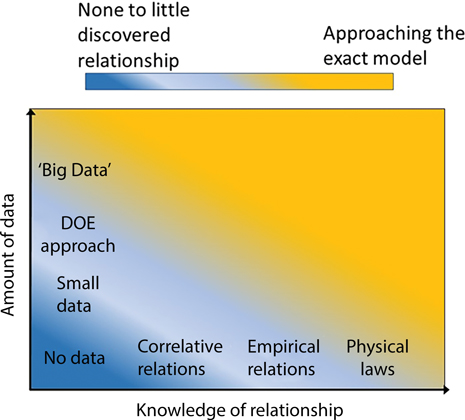Crossref Citations
This article has been cited by the following publications. This list is generated based on data provided by
Crossref.
Pugar, Joseph A.
Childs, Christopher M.
Huang, Christine
Haider, Karl W.
and
Washburn, Newell R.
2020.
Elucidating the Physicochemical Basis of the Glass Transition Temperature in Linear Polyurethane Elastomers with Machine Learning.
The Journal of Physical Chemistry B,
Vol. 124,
Issue. 43,
p.
9722.
Liu, Aaron L.
Venkatesh, Rahul
McBride, Michael
Reichmanis, Elsa
Meredith, J. Carson
and
Grover, Martha A.
2020.
Small Data Machine Learning: Classification and Prediction of Poly(ethylene terephthalate) Stabilizers Using Molecular Descriptors.
ACS Applied Polymer Materials,
Vol. 2,
Issue. 12,
p.
5592.
Childs, Christopher M.
Canbek, Oğulcan
Kirby, Tia M.
Zhang, Cheng
Zheng, Jiangnan
Szeto, Connor
Póczos, Barnabás
Kurtis, Kimberly E.
and
Washburn, Newell R.
2020.
Cheminformatics for accelerated design of chemical admixtures.
Cement and Concrete Research,
Vol. 136,
Issue. ,
p.
106173.
Bone, Jennifer M.
Childs, Christopher M.
Menon, Aditya
Póczos, Barnabás
Feinberg, Adam W.
LeDuc, Philip R.
and
Washburn, Newell R.
2020.
Hierarchical Machine Learning for High-Fidelity 3D Printed Biopolymers.
ACS Biomaterials Science & Engineering,
Vol. 6,
Issue. 12,
p.
7021.
Jablonka, Kevin Maik
Ongari, Daniele
Moosavi, Seyed Mohamad
and
Smit, Berend
2020.
Big-Data Science in Porous Materials: Materials Genomics and Machine Learning.
Chemical Reviews,
Vol. 120,
Issue. 16,
p.
8066.
Santos, D. P.
Pelissari, P. I. B. G. B.
de Mello, R. F.
and
Pandolfelli, V. C.
2020.
Estimating the thermal insulating performance of multi-component refractory ceramic systems based on a machine learning surrogate model framework.
Journal of Applied Physics,
Vol. 127,
Issue. 21,
Nalepa, Grzegorz J.
Bobek, Szymon
Kutt, Krzysztof
and
Atzmueller, Martin
2021.
Semantic Data Mining in Ubiquitous Sensing: A Survey.
Sensors,
Vol. 21,
Issue. 13,
p.
4322.
Kimmig, Julian
Zechel, Stefan
and
Schubert, Ulrich S.
2021.
Digital Transformation in Materials Science: A Paradigm Change in Material's Development.
Advanced Materials,
Vol. 33,
Issue. 8,
Melia, Hannah R.
Muckley, Eric S.
and
Saal, James E.
2021.
Materials informatics and sustainability—The case for urgency.
Data-Centric Engineering,
Vol. 2,
Issue. ,
Gasper, Paul
Gering, Kevin
Dufek, Eric
and
Smith, Kandler
2021.
Challenging Practices of Algebraic Battery Life Models through Statistical Validation and Model Identification via Machine-Learning.
Journal of The Electrochemical Society,
Vol. 168,
Issue. 2,
p.
020502.
McDonagh, James L
Swope, William C
Anderson, Richard L
Johnston, Michael A
and
Bray, David J
2021.
What can digitisation do for formulated product innovation and development?.
Polymer International,
Vol. 70,
Issue. 3,
p.
248.
Ahmed, Shady E.
Pawar, Suraj
San, Omer
Rasheed, Adil
Iliescu, Traian
and
Noack, Bernd R.
2021.
On closures for reduced order models—A spectrum of first-principle to machine-learned avenues.
Physics of Fluids,
Vol. 33,
Issue. 9,
Chakraborty, Shuvam
and
Saha, Dola
2021.
Domain Knowledge aided Neural Network for Wireless Channel Estimation.
p.
1.
Lee, Jonghwan
2021.
Physics-informed machine learning model for bias temperature instability.
AIP Advances,
Vol. 11,
Issue. 2,
Ford, Emily
Maneparambil, Kailasnath
Kumar, Aditya
Sant, Gaurav
and
Neithalath, Narayanan
2022.
Transfer (machine) learning approaches coupled with target data augmentation to predict the mechanical properties of concrete.
Machine Learning with Applications,
Vol. 8,
Issue. ,
p.
100271.
Huang, Wei
Zhao, Xingyu
and
Huang, Xiaowei
2022.
Embedding and extraction of knowledge in tree ensemble classifiers.
Machine Learning,
Vol. 111,
Issue. 5,
p.
1925.
DeCost, Brian
Joress, Howie
Sarker, Suchismita
Mehta, Apurva
and
Hattrick-Simpers, Jason
2022.
Towards Automated Design of Corrosion Resistant Alloy Coatings with an Autonomous Scanning Droplet Cell.
JOM,
Vol. 74,
Issue. 8,
p.
2941.
Bennett, Michele
J. Kleczyk, Ewa
Hayes, Karin
and
Mehta, Rajesh
2022.
Artificial Intelligence Annual Volume 2022.
Vol. 12,
Issue. ,
Pugar, Joseph A.
Gang, Calvin
Huang, Christine
Haider, Karl W.
and
Washburn, Newell R.
2022.
Predicting Young’s Modulus of Linear Polyurethane and Polyurethane–Polyurea Elastomers: Bridging Length Scales with Physicochemical Modeling and Machine Learning.
ACS Applied Materials & Interfaces,
Vol. 14,
Issue. 14,
p.
16568.
Canbek, Oğulcan
Xu, Qunzhi
Mei, Yajun
Washburn, N.R.
and
Kurtis, Kimberly E.
2022.
Predicting the rheology of limestone calcined clay cements (LC3): Linking composition and hydration kinetics to yield stress through Machine Learning.
Cement and Concrete Research,
Vol. 160,
Issue. ,
p.
106925.





